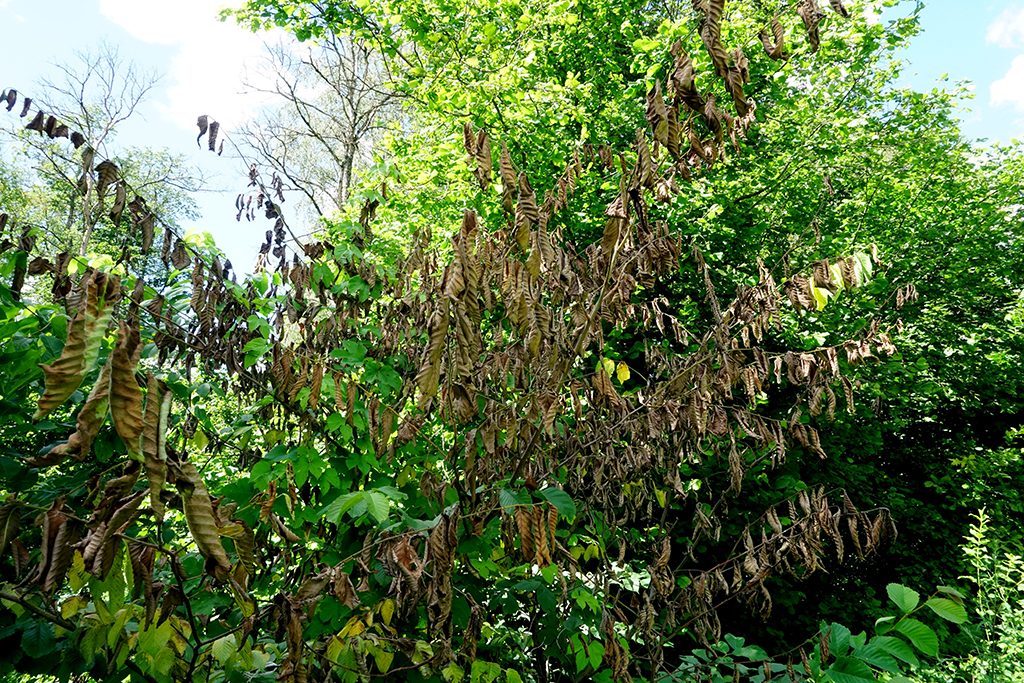Dangerous Fungi and Your Trees: Reasons To Call A Tree Removal Service | Dallas, TX
Photo By AJSTUDIO PHOTOGRAPHY at Shutterstock
Trees have a complex relationship with fungi. Although some types of fungi located in the soil are actually beneficial to trees, other types may indicate that the tree is seriously diseased and requires tree removal service. Many Dallas, TX, property owners are used to seeing mushrooms sprout up near trees, but if tree trunks or limbs sport the following types of fungal growth, they need immediate care and sometimes, unfortunately, removal. Even though not all trees are susceptible to fungal diseases, you should investigate or contact a tree expert to inspect any tree in your yard whose trunk and limbs are affected by fungi.
Why Remove Trees with Fungal Diseases?
Fungi play many integral roles in our landscapes. One of their more crucial roles is to assist in the decomposition of organic materials. If you notice that one of the trees in your landscape has developed fungi growths, you can assume that the fungi is literally going to work and decompose your tree before your eyes. Of course, it’s going to take years before a tree rots away, but the presence of fungi tells you that the tree is unwell and its structure may not be sound. A diseased tree can become a serious property risk. It can fall on your home, your neighbor’s home, on vehicles, and, of course, may even injure others. If you notice that you have a tree that’s affected by fungal growths, you may need to consider hiring a Dallas tree removal service.
Dutch Elm Disease
Dallas has experienced outbreaks of Dutch elm disease from time to time. Dutch elm disease is an invasive fungal infection that affects elm trees and is spread by elm bark beetles. The disease occurs when fungal spores enter the tree’s vascular system and can even penetrate the roots during the same season that the infection is contracted. Telltale signs of the disease are yellowing and wilting of leaves, but its rapid nature can cause the tree’s death within mere months.
If you have trees infected with Dutch elm disease, you may be able to save them if the disease is caught early, but sadly, many property owners are forced to hire a tree removal service to remove them. Removing them quickly may help you prevent the spread of the fungal disease to other healthy trees.
Armillaria Root Rot
While most soils contain armillaria fungal spores, the fungus doesn’t typically infect healthy trees. Usually, this disease sets in when the tree has suffered some sore of previous stress. However, once the tree becomes infected, the result is often fatal. Armillaria root rot is sometimes referred to as oak root rot because it does seem to affect a wide number of oak trees, but oaks aren’t the only trees susceptible to it. Junipers and orchard trees often fall victim to this fungus too.
Arborists can usually spot this type of root rot by noting the presence of dead areas on the trunk. They can make the diagnosis by peeling back the bark and spotting the white fungus growing on the wood. Although the infection can cause the gradual death of the tree, the tree’s death can also come on rapidly. To maintain the safety of your property, hire your Dallas tree removal service to take down trees affected by this condition.
Canker Diseases
Canker diseases can affect a wide range of trees in Dallas, TX and are caused by fungi. These fungal diseases cause unsightly cankers (that look like large knots) to form on the tree limbs and trunks. Trees like poplars, willows, spruce, and pine are often more susceptible to canker pathogens.
The disease enters the tree’s vascular system and causes not only the formation of the canker but a blockage that prevents nutrients from flowing. When the canker affects a tree limb, the result is that the limb eventually dies. Arborists may be able to save the tree by removing these affected limbs. However, if the cankers have enveloped the tree’s trunk, it may be beyond saving and require removal at that point. Keep in mind that if you remove diseased limbs yourself rather than calling a tree removal service, be sure to sterilize your tools afterward or you can spread the disease to healthy trees.
Can Fungal Diseases That Affect Trees Be Prevented?
In many cases, property owners can support the health of their trees, making them less vulnerable to fungal infections. However, something as commonplace as storm damage can wound a tree, opening it up to pathogens. Drought and flood can cause stress to trees and leave them susceptible to fungal infections too. However, you can care for your trees by providing them with water and fertilizer when needed. A simple measure to reduce the spread of fungal disease is to remove dead leaves which can harbor the spores. You can always call a tree removal service with any questions.
Inspect Your Trees Periodically
Many fungal diseases that affect Dallas trees can be successfully combated, especially when caught early on. That’s why you should make a point to inspect your trees for signs of stress periodically. Yellowing leaves or wilting should alert you to a problem. Your Dallas tree removal service can help you diagnose the problem and recommend the ideal solution for coping with the fungal infection. Often, limb removal is recommended. If, however, the tree’s disease is advanced, removal is the safest option.
If you need expert tree removal service in or near Dallas, TX, contact S&P Tree Service. We feature an experienced tree removal service team of arborists and tree trimming pros who can help you maintain the health of your trees and landscape. If you do need to have a tree removed because it’s diseased or has suffered some other type of severe damage, we can provide emergency removals. Contact us to learn more.


